Trees Birds Mammals Fish Amphibians Reptiles
Wild Algarve
Bookshop
Smyrnium olusatrum - Alexanders
Phylum: Magnoliophyta - Class: Equisetopsida - Order: Apiales - Family: Apiaceae
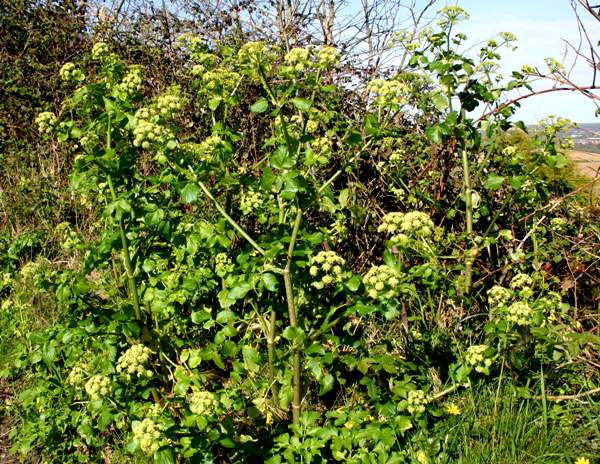
Anyone who says they love the scent of spring flowers obviously hasn't caught a whiff of these stinkers, especially when they are fading.
Description
Smyrnium olusatrum is a hairless biennial umbellifer growing to a height of 1.5m. The yellowish-green glossy leaves are divided and bluntly toothed. Young stems are solid but become hollow when old; the upper branches are usually opposite.
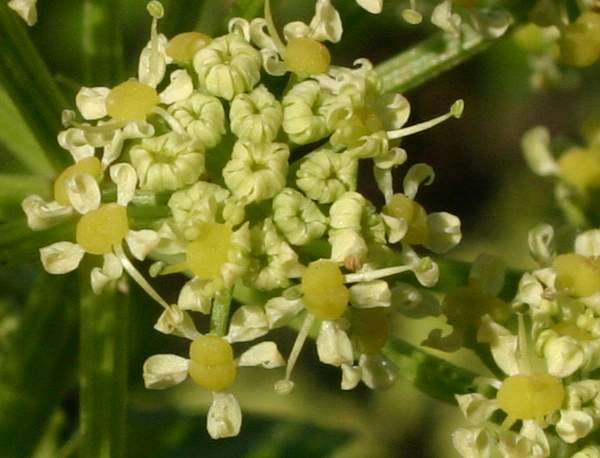
Borne in dense umbels, the yellowish Flowers of Alexanders are hermaphrodite (having both male and female reproductive organs); they have no sepals.
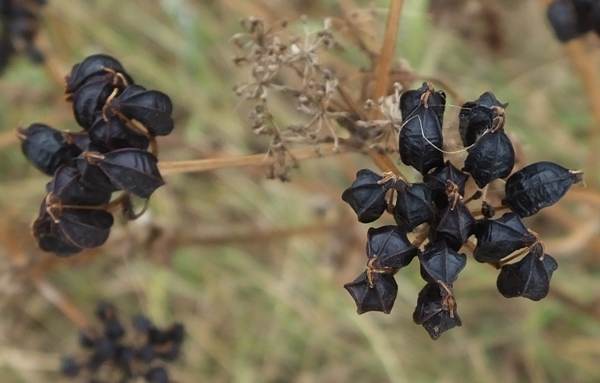
The seeds change colour from light green to black as they ripen during July and August..
Distribution
This Mediterranean plant was probably introduced to Britainby the Romans, who may have used it as a general-purpose vegetable. (The leaves and young shoots can be eaten either raw or cooked, although the bitter taste is not universally popular.) Alexanders grows wild in most coastal parts of Britain and Ireland, and in southern and central Britain it is also found in many inland locations. Further north this warm-climate cannot cope inland with winter's extreme cold, and it is confined to sheltered coastal areas.
Smyrnium olusatrum is common throughout central and southern mainland Europe
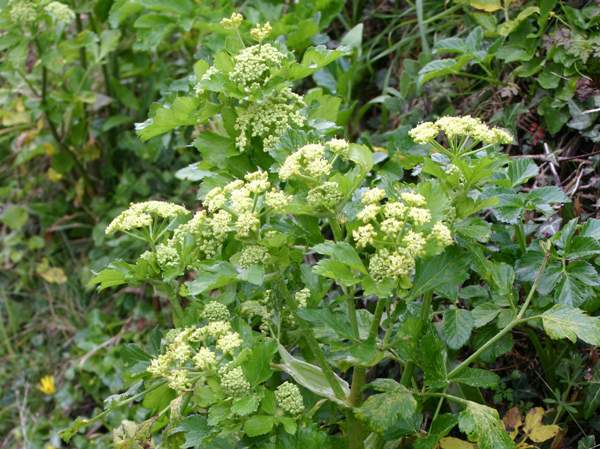
Habitat
Particularly were the soil is enriched and has been disturbed, Alexanders colonises waste land, roadside verges, woodland edges, scrub and and cliff tops.
Although mainly coastal, this umbellifer seems to have benefited from the salting of roads, and so has moved inland nearly always on or near roadside verges.
Blooming Times
This mainly coastal plant is a very early blooming member of the family Apiaceae, and you will see swathes of it in springtime along hedgerows and onthe slopes leading down to sheltered coves.
The umbrella-like yellow flower heads open in April, and by July the seeds are beginning to ripen and turn dark brown.
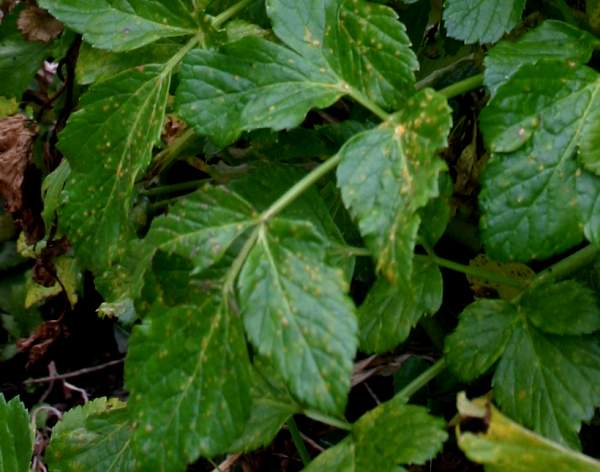
Uses
All parts of this plant are considered edible, but older leaves and stems are usually cooked; only young leaves and shoots are worth adding raw to salads. The first new leaves appear during winter, before many other edible wild plants are available. In the distant past Smyrnium olusatrum was used in many herbal remedies, but nowadays other plants are generally considered superior. (We strongly advise against eating or using as medicines any plants without first obtaining qualified professional advice.)
Etymology
The generic botanical name Smyrnium comes from the Greek word smyrnion, which means myrrh. It suggests that the smells of Alexanders and of myrrh may be similar.The specific epithet olusatrum comes from the Latin olus-, a garden herb, and -ater, black - referring to the seeds.
The pictures of Alexanders shown on this page were taken in West Wales during April.
Sue Parker's latest ebook is a revised and enlarged edition of Wild Orchids in The Burren. Full details here...
Buy it for just £5.95 on Amazon...
Sue Parker's new ebook is a comprehensive and fully revised edition of her acclaimed field guide to the Wild Orchids of Wales. Full details here...
Buy it for just £5.95 on Amazon...
Please Help Us: If you have found this information interesting and useful, please consider helping to keep First Nature online by making a small donation towards the web hosting and internet costs.
Any donations over and above the essential running costs will help support the conservation work of Plantlife, the Rivers Trust and charitable botanic gardens - as do author royalties and publisher proceeds from books by Pat and Sue.